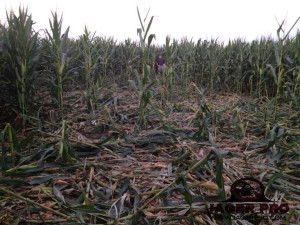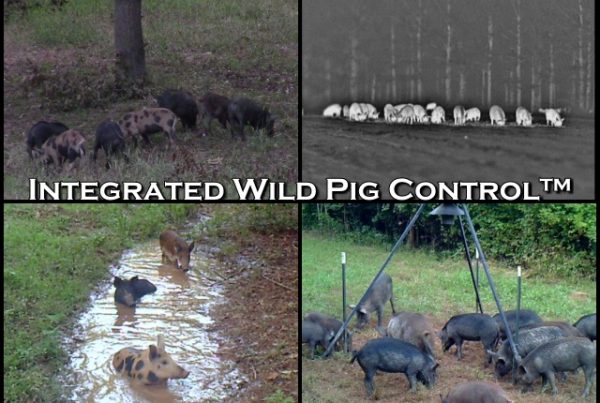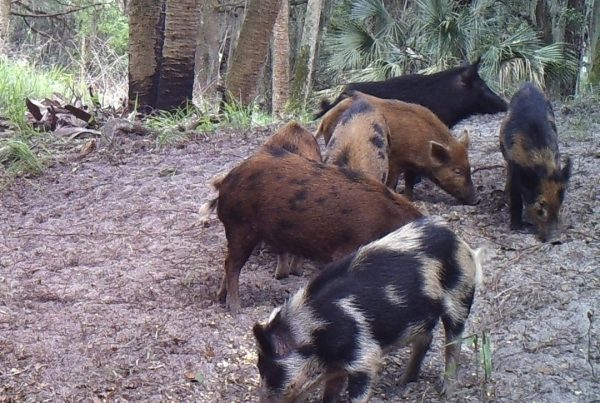The key to controlling future wild hog populations in the United States is by overcoming the four unique conditions stated in a previous blog titled, UNDERSTANDING THE WILD HOG PROBLEM which are:
- High reproduction rate allows the capacity to recover quickly from most control efforts.
- High intelligence level elevates education during failed control attempts.
- Incredible sense of smell to avoid substandard control efforts.
- Human dimensions (must change first to adopt new methods and technologies).
DAMAGE MANAGEMENT IS NOT POPULATION CONTROL

The IWDM approach also incorporates or recommends a range of non-lethal and lethal techniques for resolving conflicts with feral swine. Nonlethal methods used or recommended by the IWDM model may include fencing and aversive devices which do not prevent reproduction of the species thereby offering no benefit or solution to the problem. JAGER PRO believes there is no justification to incorporate cultural practices, modify habitat or manage the behavior of a non-native, invasive species. Lethal population control is the only credible option for wild hogs since they exhibit such an extremely high reproduction rate and intelligence.
Wild hogs are NOT native to the United States

Therefore, this agricultural pest should not be treated or managed as wildlife, but rather efficiently controlled as vermin under an Integrated Pest Control (IPC) model. Wild hogs carry parasites and diseases which pose a threat to human health, domestic livestock, pets and wildlife which harmfully impacts agriculture, natural resources, soil erosion, water quality and property. Unlike other agricultural pests, there is not an acceptable population level (action threshold) for wild hogs. Any indicator on a property requires immediate lethal action as hogs have no natural predators (biological controls) and there are currently no chemical controls legally approved for use in the United States. Preventive cultural controls and physical controls do not prevent reproduction. Mechanical controls such as high-volume trapping and thermal night shooting are the most efficient options. Lethal control is the Best Management Practice (BMP) for feral swine.
A farmer has the same right to remove corn rootworms, soybean aphids and feral swine from their crops (our food and clothing) as a homeowner’s right to remove termites, rats or cockroaches from their home. Insect versus mammal makes no difference to the legal definition of a pest or the BMPs needed to control them. Pigs were released into the wild by ignorant humans. Therefore, this man-made problem requires an efficient, man-made solution.
INTEGRATED WILD PIG CONTROL® MODEL

Focusing efforts to reduce entire wild hog populations (one sounder at a time) will automatically reduce the damage caused to agriculture, natural resources and property. Implementing the most efficient methods and technologies to accomplish whole-sounder removal will also reduce previous fuel, time and labor expenses. A national performance standard must focus on efficiently controlling wild hog populations; not managing their damage. Our IWPC® Training Manual was written to provide the Mission Essential Task List (METL) needed to train 22 standardized tasks then execute a control plan and measure the results.
CHANGING THE HOG CONTROL STANDARD

However, universities are viewed differently since their mission is to offer education and learning opportunities. Many professors are teaching outdated IWDM principles to their wildlife biology students during Damage Management courses. They also emphasize wild hog history, biology, ecology and disease to the public at Damage Management workshops instead of focusing on the most effective population control methods and tasks. These academic courses and public workshops are only teaching a theory behind a practice and do not certify competence, measure actual results or promote performance based decisions. Students and land owners are not being prepared for success.





